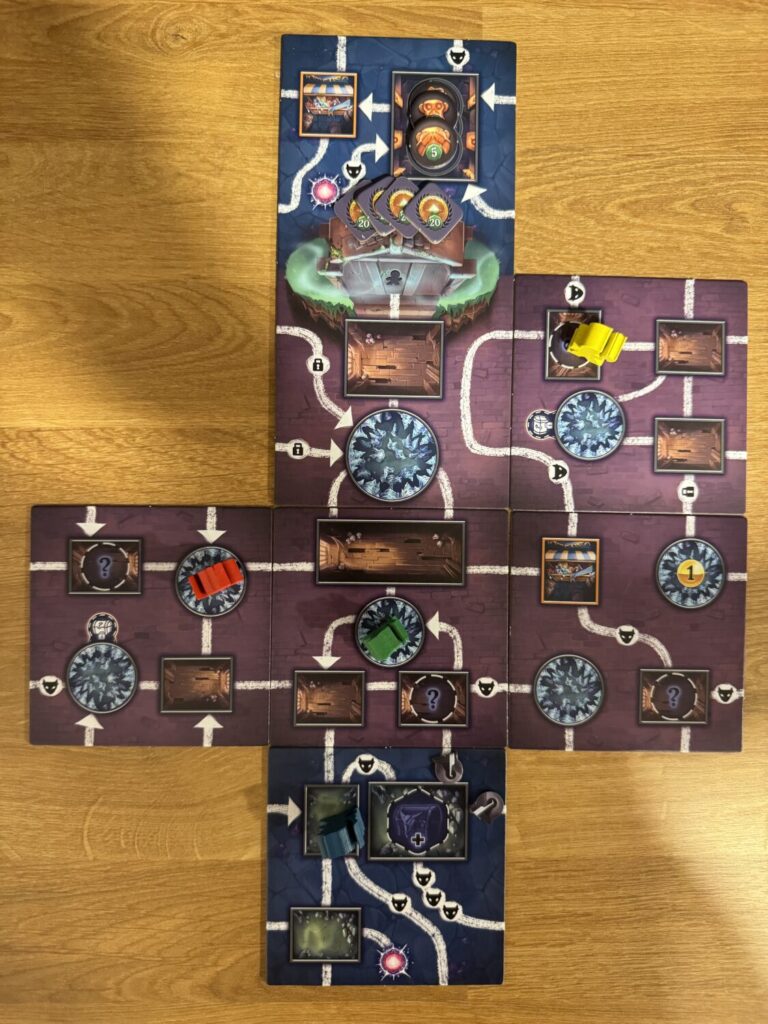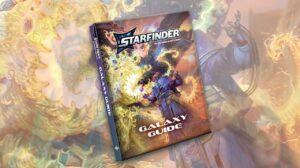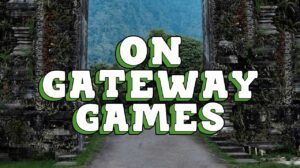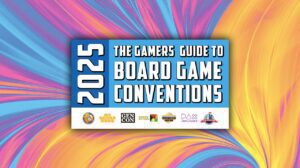Disclosure: Meeple Mountain received a free copy of this product in exchange for an honest, unbiased review. This review is not intended to be an endorsement.
My first foray into the world of Clank! was through a playthrough of Clank! In! Space!: A Deck-Building Adventure at a mini gaming retreat in Minneapolis. It was a harrowing time as my odds constantly seemed against me as the bag filled up with my previous Clank! cubes. In the end, only half of us made it out alive, but I immediately wanted to play again. Clank!: Catacombs offers a fresh take on the acclaimed series, throwing the players into the treasure-laden dungeon of the skeletal dragon Umbrok Vessna. Does it stand on its own merits? Let’s find out.
Clank!: Catacombs Overview
Clank!: Catacombs is a deck-builder where each player starts with the same ten cards. Over the course of the game, players buy cards to add to their decks, hopefully building synergies that will allow them to navigate through the catacombs. The goal is to find an Artifact and return back to the Crypt space without filling up your Health Meter. Once all players have escaped the catacombs or have been knocked out, any players who managed to get an artifact who weren’t knocked out in the Depths (the deeper parts of the dungeon) get to tally up their points. Whoever has the most points wins.
Each player starts their turn with five cards in their hand. During the turn, they must play all five cards in whatever order they want, and follow through on the cards’ text. The primary actions involve leveraging the blue diamonds (Skills) to buy cards and use devices, the red circles (Swords) to Fight Monsters, and the gold squares (Boots) to Move around the board.
Acquiring a card requires spending the appropriate amount of Skill from your played cards to take an available card from the Dungeon Row. There are some Reserve cards with basic abilities that are always available to take, but the real bread and butter comes from the Dungeon deck. Once you’ve acquired a card, it goes into your discard pile. When you run out of cards in your deck, your discard pile gets shuffled to create a new deck, which means those newly acquired cards are right on the horizon.
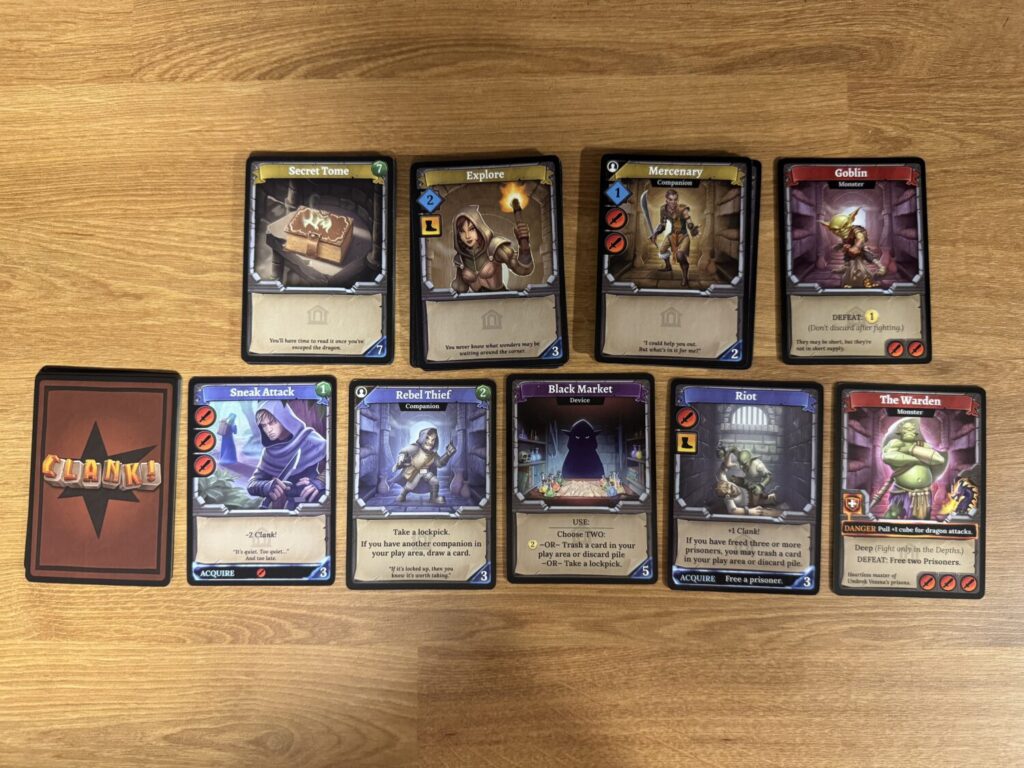
Using a Device allows you to spend the requisite symbols to activate a card in the Dungeon Row as a one-time use, and these cards don’t get added to your discard pile afterwards.
Fighting a Monster requires players to spend their swords to defeat Monsters in the Reserve or the Dungeon Row to receive the listed benefit. These rewards could be coins—used as end-of-game points or to buy items from the Market—or other useful benefits like lockpicks which will allow you to move more freely throughout the dungeon.
When you take a Move action, you spend Boots to move along the winding track ala Tsuro. When you reach the edge of a tile, you get to Discover a new Tile and place it onto the dungeon, revealing the deeper portions of the catacombs. This is the primary departure from the previous Clank! iterations which have featured a fixed board. It creates a completely different experience each game. Sometimes you’ll run into Artifacts early and often, while other times you have to delve quite deep before finding that which you seek. In that case, the path back to the Crypt gets agonizingly long…
As you play cards from your hand, you will be generating Clank! Whenever you play a card that says something like +1 Clank, you’ll take one of your cubes and place it into the included bag. After each turn, you refill your hand and the Dungeon Row before checking to see if the Dragon attacks. If any of the new cards added to the Dungeon Row have a Dragon symbol, cubes are drawn from the bag corresponding to the Dragon’s current level of Rage, which increases as the game goes on. When a player’s cube is drawn, that player takes damage and the cube is placed on their Health Meter. And if a white Ghost cube is drawn from the bag, then everybody takes damage! If your Health Meter is ever filled, you’re knocked out and no longer take turns in the game.
There are some other unique spaces on the board—like the Crystal Cave and the Market—which operate in the same way as the original Clank!. Other tiles feature Portals that allow you to exit into any other Portal in the map, offering a creative way to cover lots of ground quickly. There are also Haunted Tiles that force the aforementioned Ghost Cubes into the bag for when those vengeful ghosts come back to collect their due.
One of the last major changes in Clank!: Catacombs is the inclusion of lockpicks. Whenever you encounter a lockpick space on your path, you must spend a lockpick to advance beyond it. The lockpick token is placed on the board, thereby serving as a reminder that this path is forever clear for anybody to traverse. They are a valuable resource and key to your success in the catacombs.
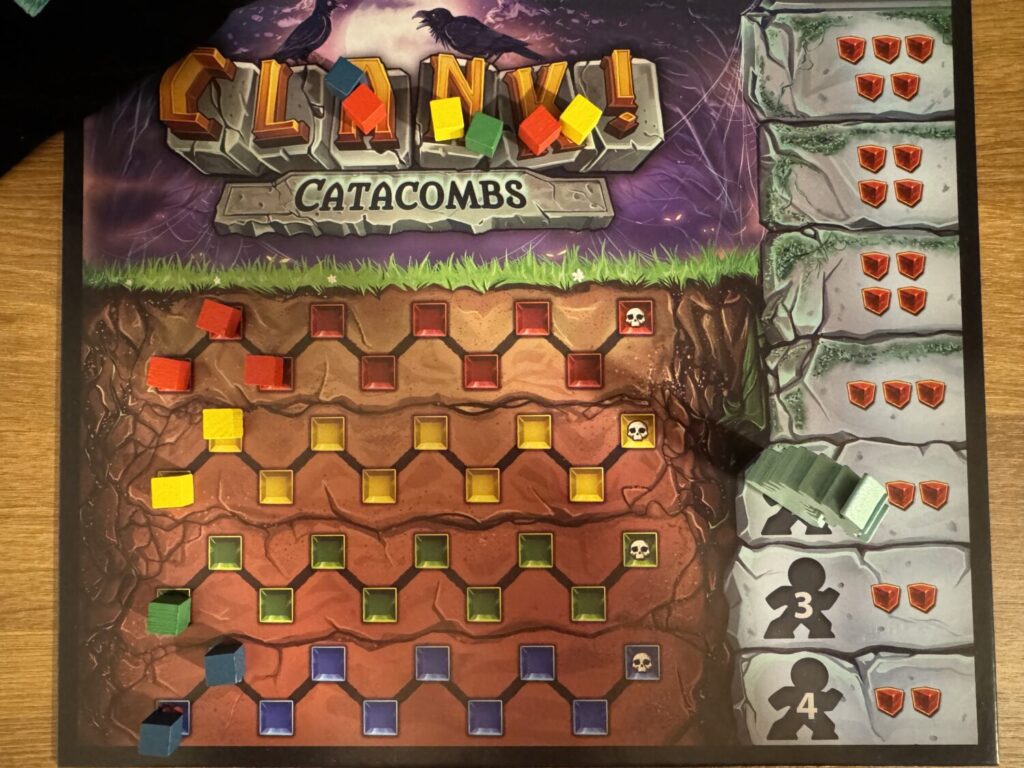
Clank!: Catacombs: Make Some Noise
The core gameplay loop of Clank!: Catacombs is fantastic, and right in line with the other games in the series. Even at nearly a decade old, the original Clank! still sits solidly in the BGG Top 100, and deservedly so. I find Clank!: Catacombs, however, to be the best of the bunch.
Designing a modular board isn’t an easy task because you have to account for game-breaking possibilities depending on orientation of tiles and unexpected interactions. When you discover a new tile in Clank!: Catacombs, you get to rotate that tile to your heart’s content, forever changing the dungeon layout. Instead of memorizing a preset path that you hope to take, you are forced to think on your feet and play the game presented to you by the randomness of the tiles.
This can be a divisive mechanic. On the one hand, revealing tiles and determining their orientation certainly increases the gameplay time beyond the other Clank! titles, because players are trying to determine optimal placement and rotation that will give them the best odds of success. What I like about the modularity, however, is that every game has a different level of tension created by the abundance or lack of artifacts. Early Haunted tiles can be devastating, causing players to take the least valuable artifacts and heading back to the Crypt as quickly as possible. Other times you can have games where artifacts are plentiful, and instead players are focused on padding out their decks with as many points as they can afford before the Dragon’s Rage is too much to bear.
Depending on the placement, these tiles can also cause your board to take up a vast amount of real estate, requiring a proper table.
What I love about Clank!: Catacombs is the risk built into the game. You know exactly how many cubes are going into that bag and, therefore, your odds of taking damage. Taking a bunch of damage early just means that you have a free ticket to play fast and loose knowing that the odds of your cubes being drawn are much lower. Then there’s the opposite of that, where you know that at some point your luck is going to run out and the avalanche of health damage will rain down like an avalanche.
The biggest downside of the game is that the setup requires the shuffling and stacking of many cardboard tokens, which do not shuffle nearly as well as cards. But don’t worry, there’s plenty of card shuffling that you have to do as well. Just be sure that you separate out the Starting Cards before you do so, otherwise you’ll be digging through the stack of cards to remove them. There is also an abundance of iconography on the tokens which isn’t always intuitive, especially on your first few plays. You’ll be checking the included reference guide frequently until you get used to it.
Despite those minor quibbles, Clank!: Catacombs is a solid deck-building game whose modularity gives it an extra dimension of fun. Instead of having that final run back to the Crypt be mostly uneventful, you might be distracted by treasure through the use of portals or even discovering new tiles as you hope to find a shorter route back to the start. I can deal with a slightly longer gameplay time if it means that I can adjust my strategy for each play based on the layout of the catacombs. What’s the worst thing that could happen from drawing just one more tile?
Curiosity got the better of the cat, but for me: it’s worth the Clank!
